This week we take a look at some Public Works architecture in Minnesota and how it came to be: the “Rustic Style” design of many buildings found in Minnesota’s State Park systems. The idea behind this style was to blend in with the natural environment and often used local timber and stone to create the structures, all by hand. Utilitarian, yet beautiful and impressive.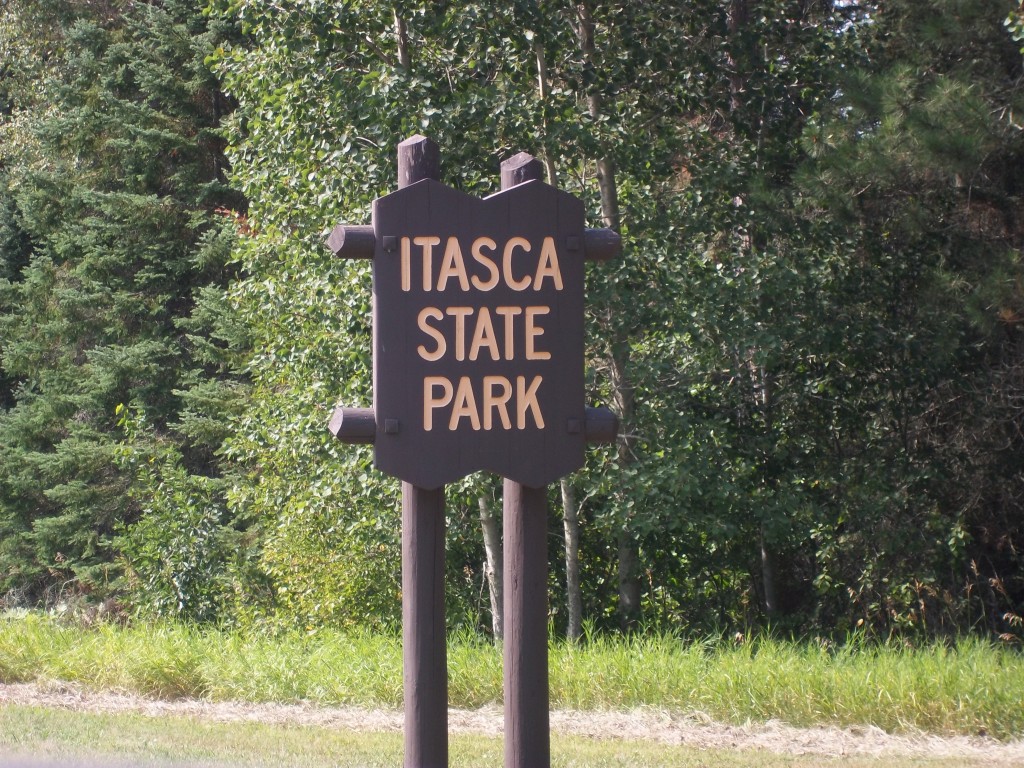
Minnesota’s state park system consists of 67 parks, each unique and wonderful in their own way. The system was devised as early as the 1890’s, but it really kicked into gear in the 1930’s, when most of the country was out of work due to World War II. Under President FDR’s New Deal, government-funded programs called the Works Progress Administration (WPA), the Emergency Relief Act (ERA), and the Civilian Conservation Corps (CCC) were put into place to put laborers back to work building infrastructure. The Rustic Style designs of the state park buildings aimed to have a natural feel rather than man-made. 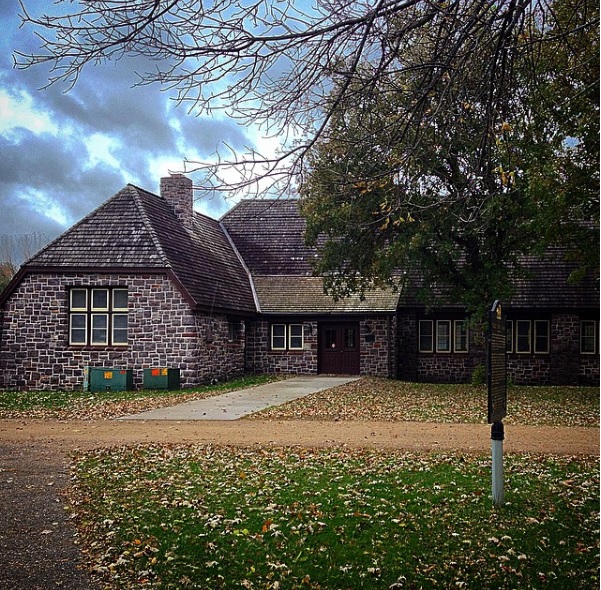 10. Combination Building, Flandrau State Park (New Ulm) – One of the largest buildings in the Minnesota State Parks system, the Combination Beach House, Kitchen, and Shelter at Flandrau State Park near New Ulm was also one of the first state park buildings designed for winter use as well. It was built was under the WPA in 1938.
10. Combination Building, Flandrau State Park (New Ulm) – One of the largest buildings in the Minnesota State Parks system, the Combination Beach House, Kitchen, and Shelter at Flandrau State Park near New Ulm was also one of the first state park buildings designed for winter use as well. It was built was under the WPA in 1938.
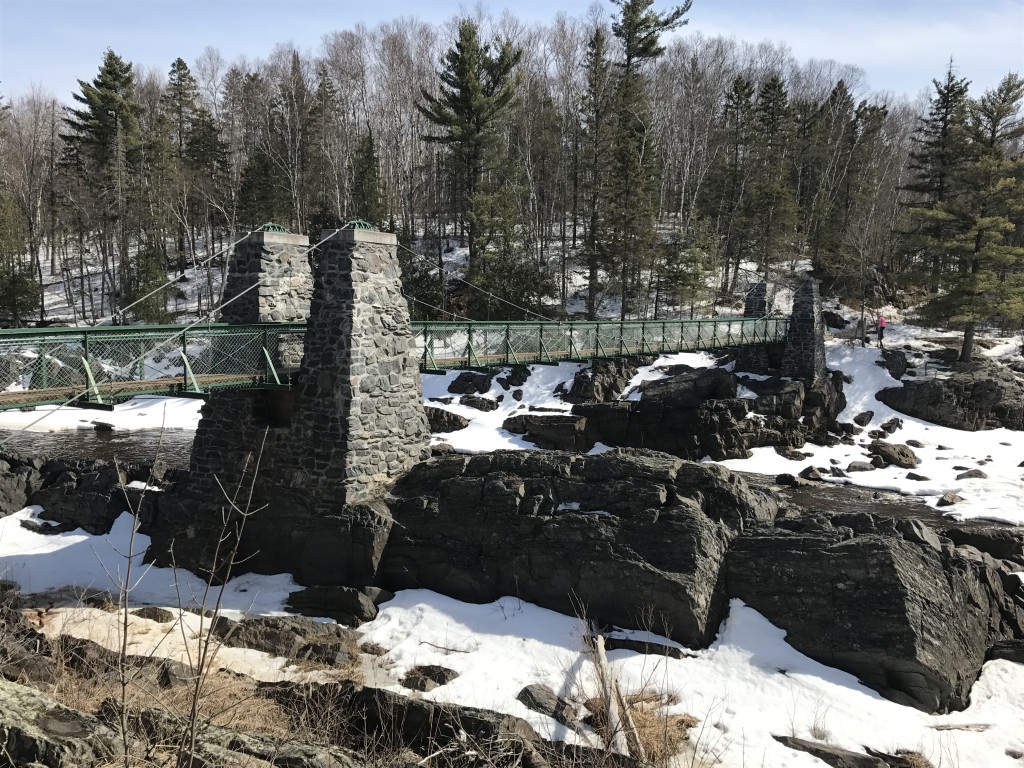 9. Swinging Bridge, Jay Cooke State Park (Carlton) – The impressive Swinging Bridge in scenic Jay Cooke State Park south of Duluth was severely damaged by a major flood in June of 2012. Measuring 200 ft’ long, it spans the width of the St. Louis River and features two massive stone pylons anchoring each end. The Swinging Bridge is one of the main features of the park, and has since been completely restored since the catastrophic flood.
9. Swinging Bridge, Jay Cooke State Park (Carlton) – The impressive Swinging Bridge in scenic Jay Cooke State Park south of Duluth was severely damaged by a major flood in June of 2012. Measuring 200 ft’ long, it spans the width of the St. Louis River and features two massive stone pylons anchoring each end. The Swinging Bridge is one of the main features of the park, and has since been completely restored since the catastrophic flood.
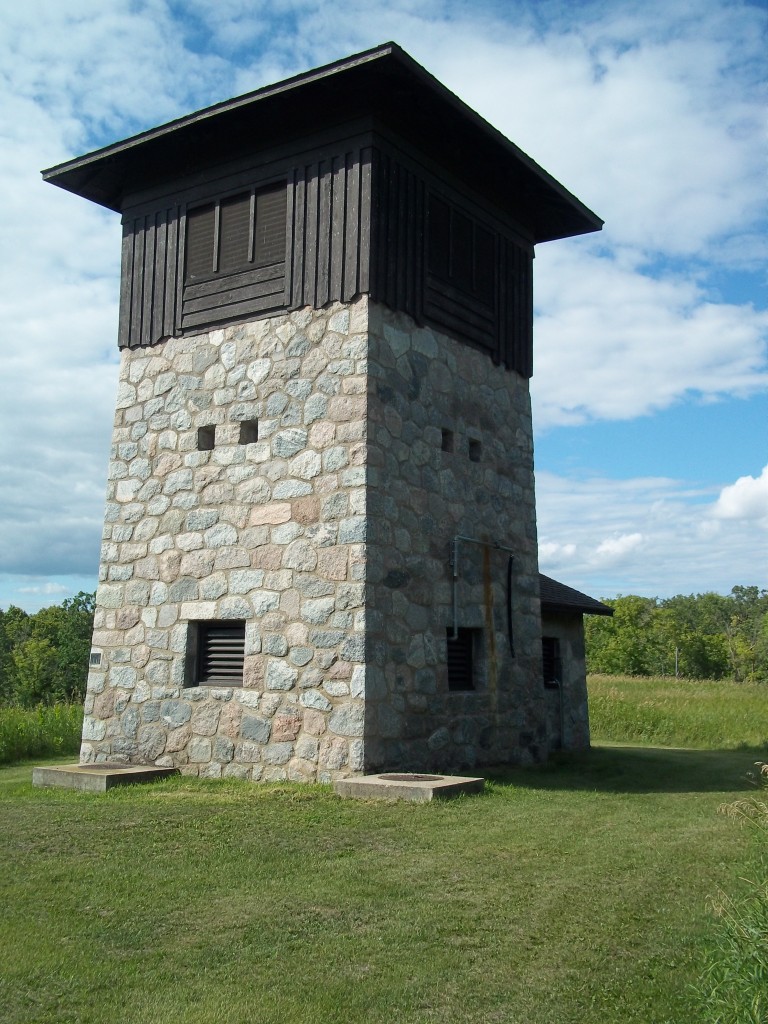
8. Square Towers, Lake Bemidji State Park (Bemidji), Charles Lindbergh State Park (Little Falls), and Old Mill State Park (Argyle) – Several state parks feature water towers that were built during the CCC or WPA’s stays at the camp. The workers then would build a rock and wood encasement around the tower, giving it a natural aesthetic.
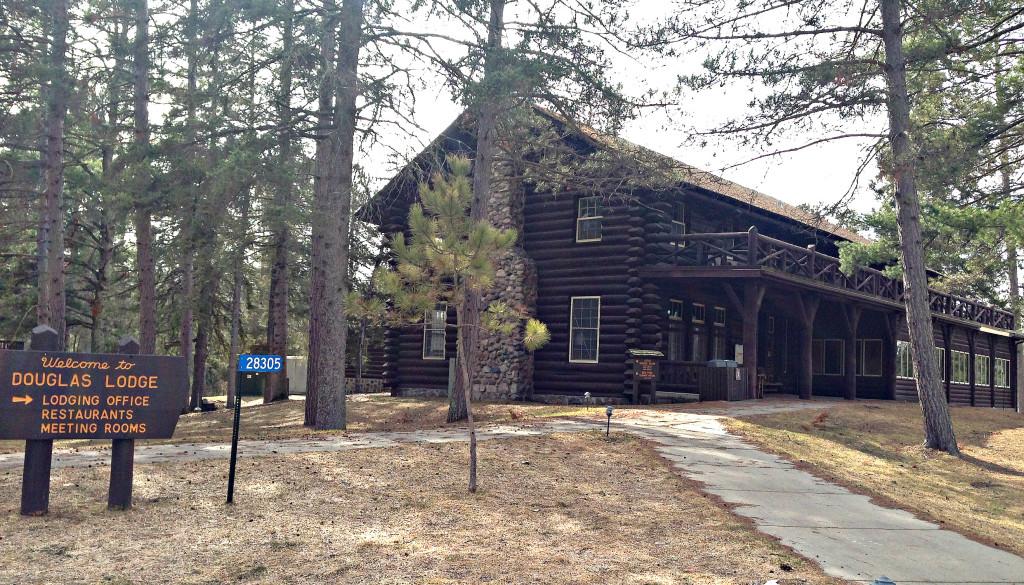
7. Douglas Lodge, Itasca State Park (Park Rapids) – Itasca State Park’s Douglas Lodge was built in 1905, making it the oldest surviving building in Minnesota’s state park system. It was built with state funds appropriated for the purpose of the Itasca State Park in 1903, using timber logged inside the state park confines. It was initially used as the main tourist center for Itasca, and now houses offices, lodging and a restaurant.
 6. Mission Church, Crow Wing State Park (Brainerd) – Crow Wing State Park near Brainerd sits on the site of one of northern Minnesota’s oldest known settlements, Crow Wing Village. A Catholic mission log church was established in the 1850’s, and a timber frame chapel was built in 1867. In the 1950’s, the local order of the Catholic fraternity Knights of Columbus built this Midcentury Modern-designed chapel using stones from the foundation of the original chapel.
6. Mission Church, Crow Wing State Park (Brainerd) – Crow Wing State Park near Brainerd sits on the site of one of northern Minnesota’s oldest known settlements, Crow Wing Village. A Catholic mission log church was established in the 1850’s, and a timber frame chapel was built in 1867. In the 1950’s, the local order of the Catholic fraternity Knights of Columbus built this Midcentury Modern-designed chapel using stones from the foundation of the original chapel.
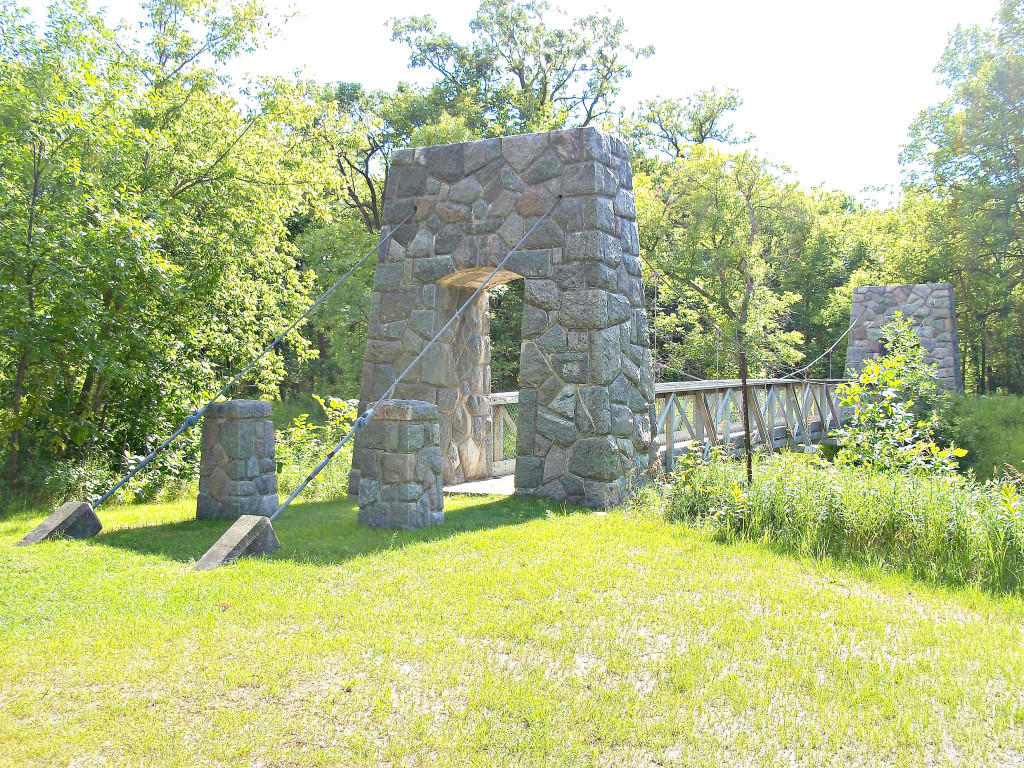
5. Bridge, Old Mill State Park (Argyle) – The whimsical suspension bridge at Old Mill State Park in the northwestern part of the state was a notable architectural achievement for its time, being built under the WPA in the late 1930’s. Upstream from it is an old crumbling historic dam, and upstream further than that is the eponymous Old Mill from the late 1800’s.
Image Source: Flickr
4. Lookout Tower, Sibley State Park (New London) – Perched high atop a bluff known as Mount Tom, the Lookout Tower in Sibley State Park north of Willmar did not initially contain the observation deck on top. It originally was built with the roof just above the stone part, which made for a mushroom-shaped shelter. The add-on deck allows for a higher vantage point overlooking the surrounding plains and rolling hills.
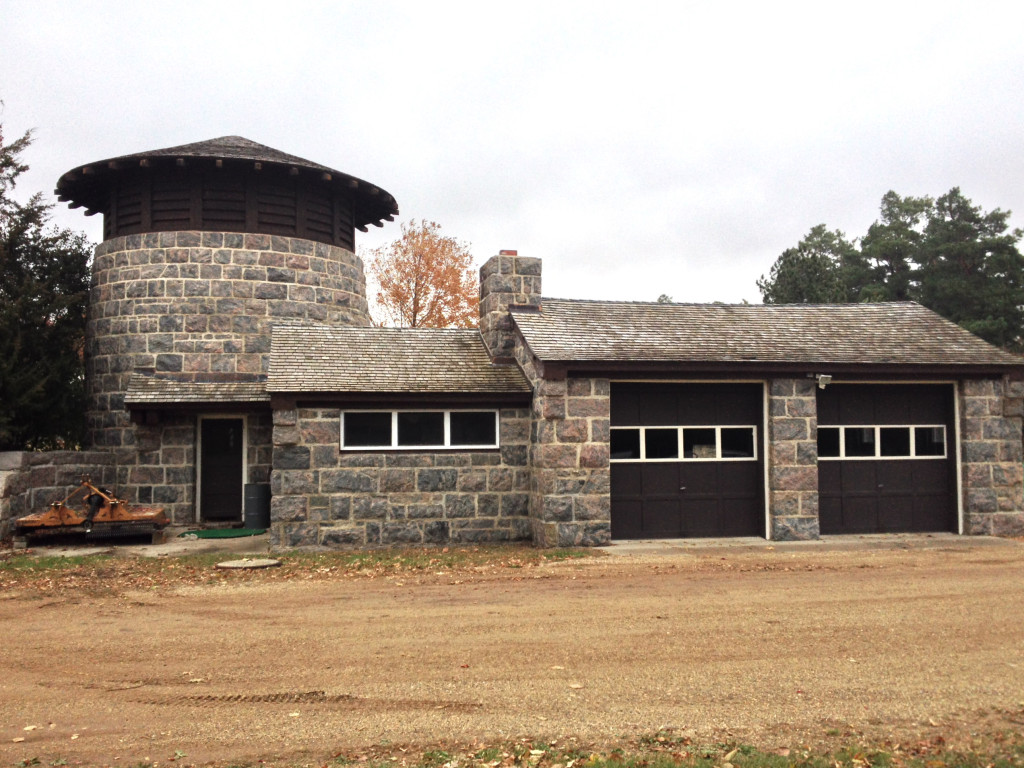
3. Round Water Tower and Garage, Fort Ridgely State Park – Fort Ridgely State Park near New Ulm has several beautiful stone structures, but the round tower is its most iconic. In addition to the tower, the building includes a workshop, garage, and offices. It was built in 1937 by the CCC using Morton Rainbow Granite from a nearby quarry.

2. Hexagonal Tower, Lake Bronson State Park (Lake Bronson) – The largest water/observation tower in the Minnesota State Park system, the stone tower at Lake Bronson (in northwestern Minnesota near Karlstad) is also the most unique. Built by the WPA in the late 1930’s, the tower was built in a hexagonal shape, making for a dramatic addition to the park.
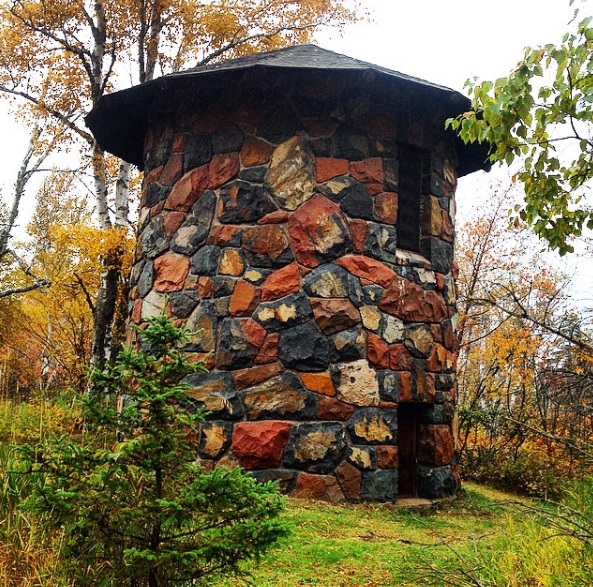
1. Gooseberry Falls State Park Water Tower (Two Harbors) – A project of the CCC in the 1930’s, the many stonework structures at Gooseberry Falls State Park were built using different colored rocks from Lake Superior. There are a lot of beautiful structures at Gooseberry, including a concourse around the falls area, stone picnic tables, several auxiliary buildings/shelters, and a viewing plaza near the lake. But the most amazing of all is the Water Tower, built with red and blue granite standing 25 ft tall. It holds a 10,000 gallon tank and was completed in 1936. The mysterious and beautiful tower stands just off a short hike off of one of the main roads in the park and looks like something right out of a fairy tale.
Did we miss any other structures that could have made the list? Let us know!

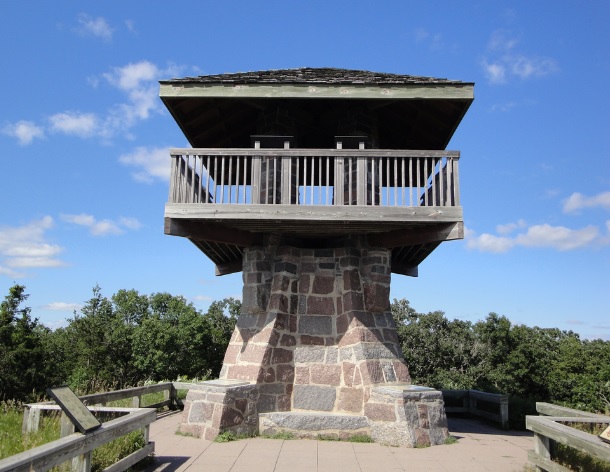
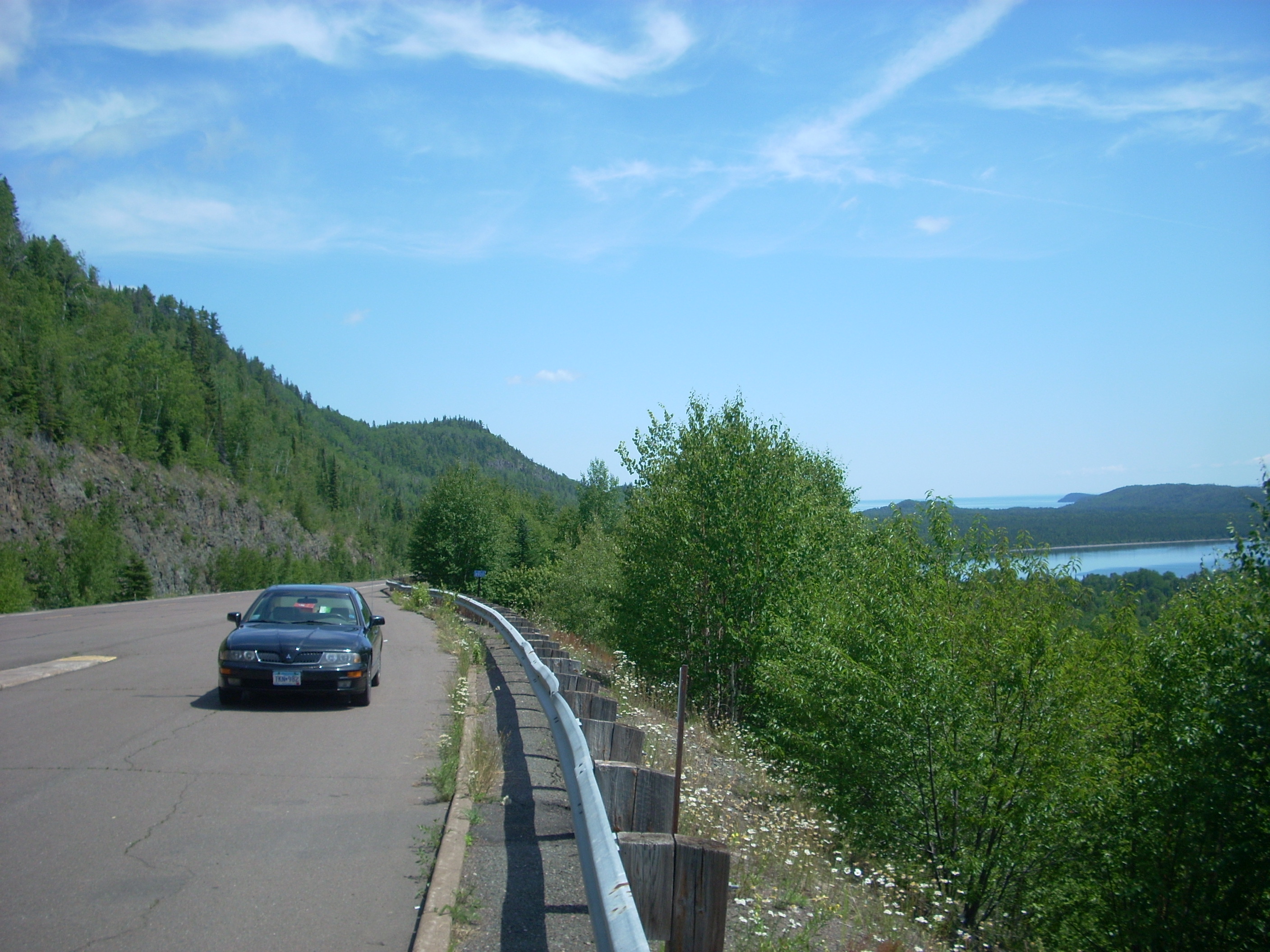






Love this site! You and Garrison Keillor make me proud to be from Minnesota (I moved on in 1967). You are sooooo very near perfection in all that you do, so please check the last sentence in #6 and re-write. Thanks. There. Perfection!
Thank you! Some days I think I could use a proofreader!